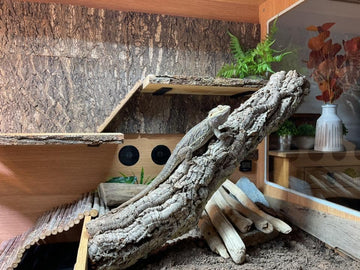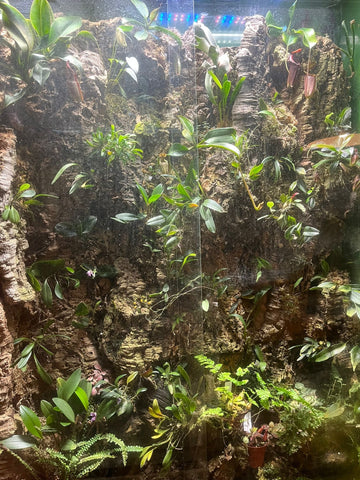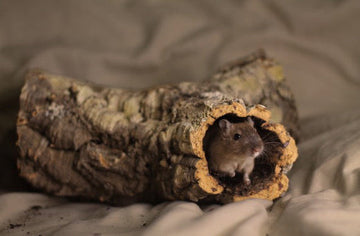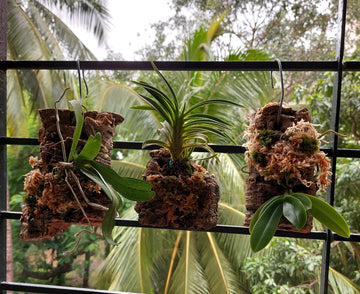
Terrarium décor is more than just a design choice - it’s about creating a habitat that meets your reptile’s needs while adding visual appeal. A well-decorated terrarium helps replicate natural environments, which are vital for your pet’s mental and physical well-being. By incorporating the right materials and practical design elements, you can transform a basic enclosure into a thriving ecosystem.
Why Natural Décor is Essential
Natural materials not only enhance the look of your terrarium but also provide functional benefits:
-
Cork Bark Branches: These are lightweight, durable, and ideal for climbing or hiding. Their natural appearance blends seamlessly with terrarium décor.
-
Cork Granules: These create a soft, natural substrate that’s perfect for burrowing reptiles or as a base layer for live plants.
-
Grapewood Vine: Adds verticality, giving climbing species like geckos or chameleons a chance to explore. Its unique shapes also make it a decorative focal point.
Using natural materials ensures your reptile feels at home while keeping the enclosure easy to maintain. For example, cork bark is naturally antimicrobial, reducing bacteria growth.
Design Principles for Terrarium Décor
When setting up your terrarium, consider these design principles:
-
Layering: Create depth by layering materials. Use cork granules as the base, cork bark branches in the middle, and grapewood vines for upper levels.
-
Enrichment Opportunities: Include décor that allows your reptile to climb, hide, and explore, encouraging natural behaviours.
-
Microclimates: Use décor to help create areas with different humidity and temperature levels, allowing your reptile to move between zones.
Practical Ideas for Naturalistic Terrarium Décor
Here are some specific ideas to inspire your terrarium setup:
-
Natural Hiding Spots: Incorporate cork hides or small caves made from cork bark. These provide your reptile with a secure place to retreat.
-
Live Plants: Add plants suitable for your reptile’s environment, such as pothos or bromeliads for tropical setups. These not only improve air quality but also boost humidity.
-
Water Features: Small, shallow water dishes or naturalistic waterfalls can be both functional and decorative.
Customising Décor for Different Species
The type of terrarium products you choose should match the needs of your reptile:
-
Desert Species: Use sand, rocks, and flat cork bark pieces for basking.
-
Rainforest Species: Focus on humidifiers, mosses, and climbing structures like grapewood vines.
-
Arboreal Species: Provide plenty of vertical space using vines, branches, and elevated hides.
Maintaining Your Terrarium Décor
Regular maintenance ensures your terrarium stays hygienic and visually appealing:
-
Cleaning Natural Materials: Cork bark and grapewood can be lightly scrubbed and rinsed to remove debris. Always ensure they are thoroughly dried before placing them back.
-
Monitoring Wear: Check for signs of wear or mould on natural materials and replace as needed.
-
Refreshing Substrates: Cork granules or soil substrates should be replaced periodically to prevent odours and bacteria buildup.
Final Touches for an Enriching Habitat
Terrarium décor isn’t just about functionality—it’s an opportunity to create an engaging and stimulating environment for your reptile. Thoughtfully placed natural materials like cork bark, cork granules, and grapewood vines provide not only beauty but also a healthier, more enriching space. By tailoring the setup to your pet’s specific needs, you’ll create a terrarium that’s as enjoyable for them as it is for you to admire.



